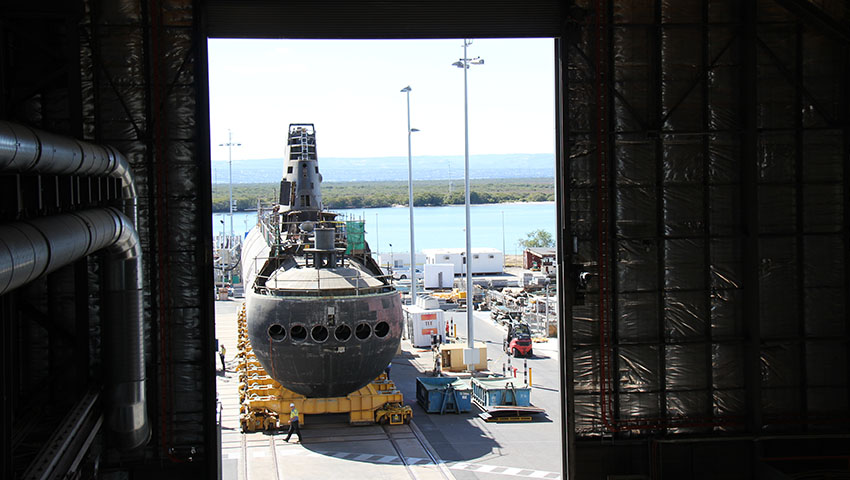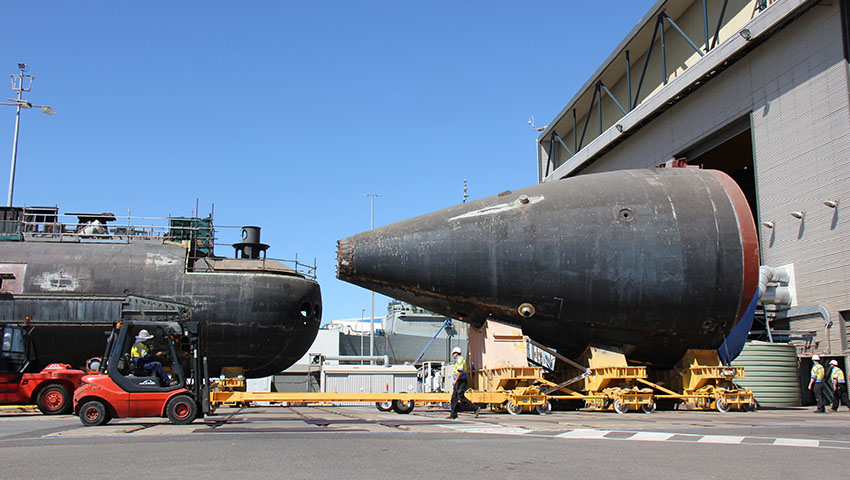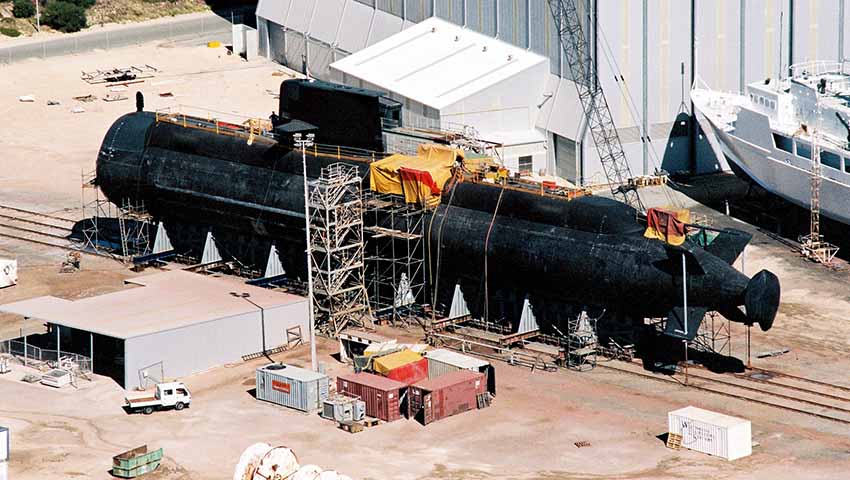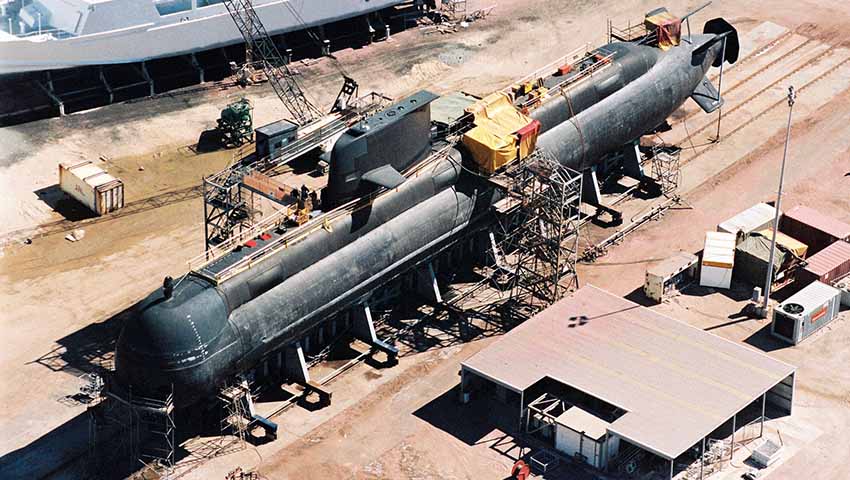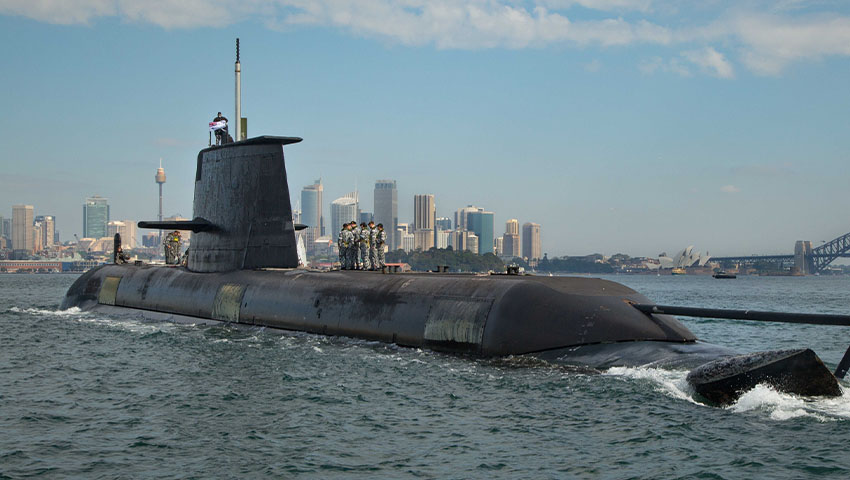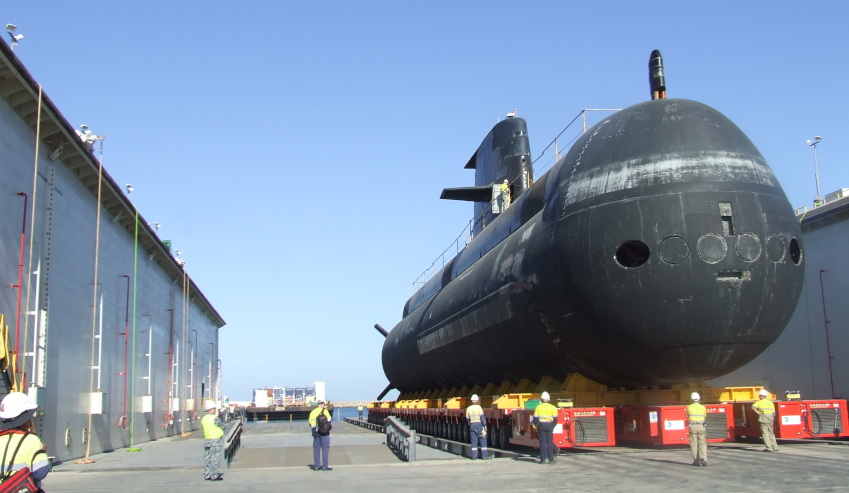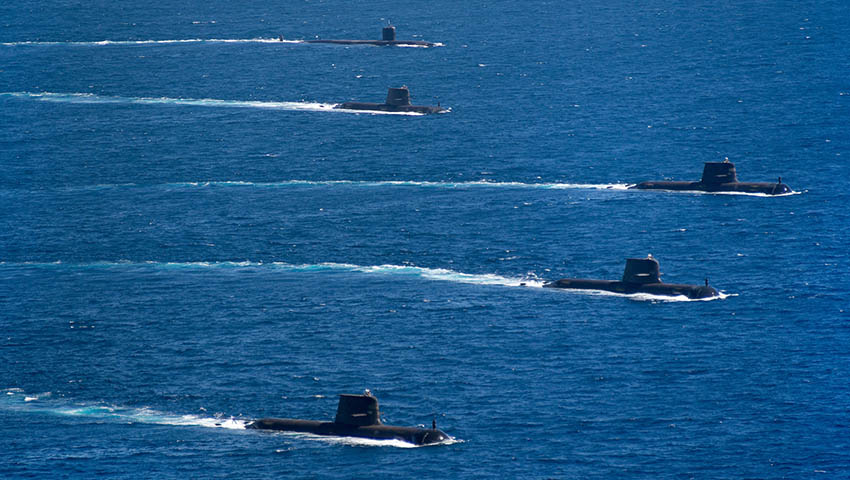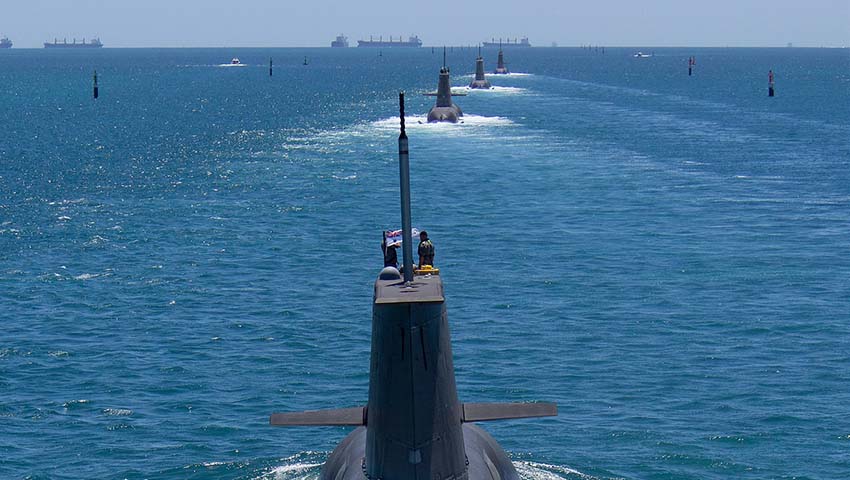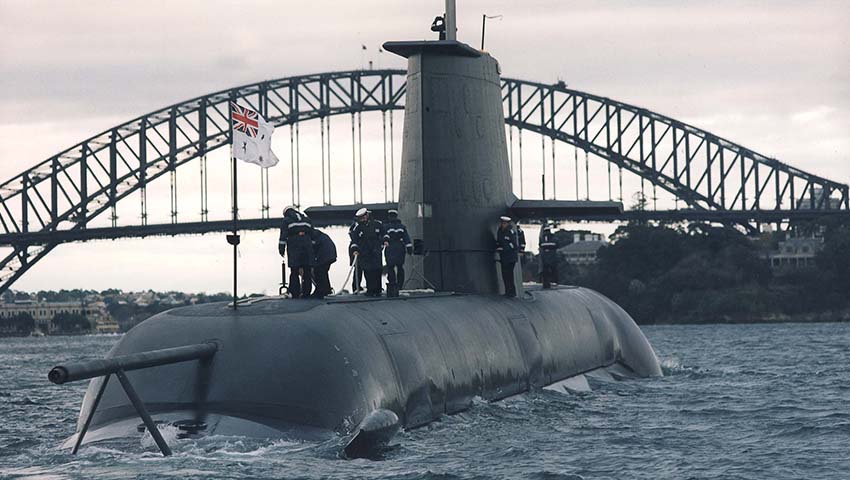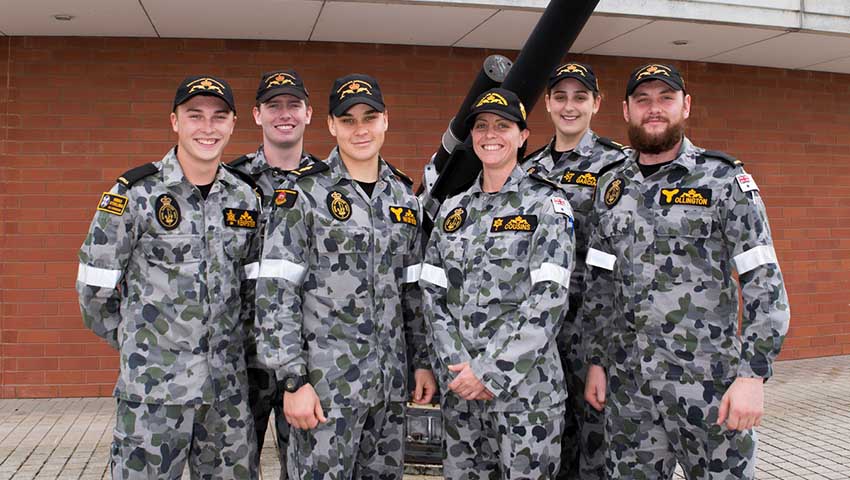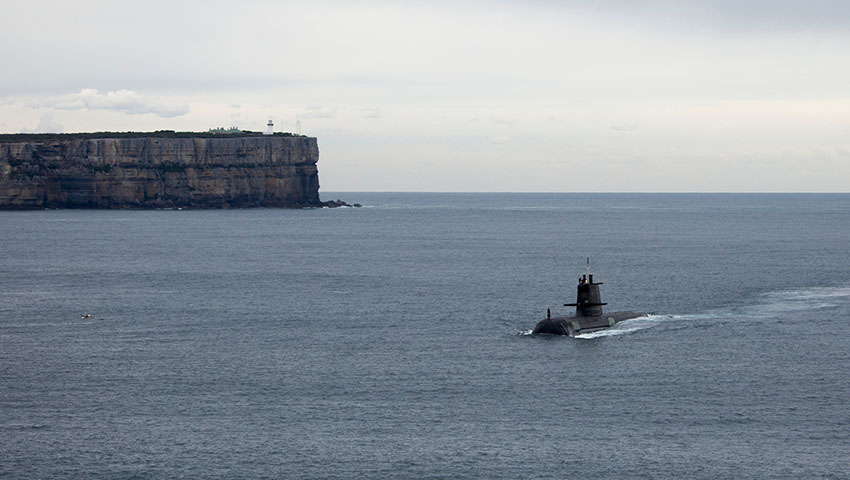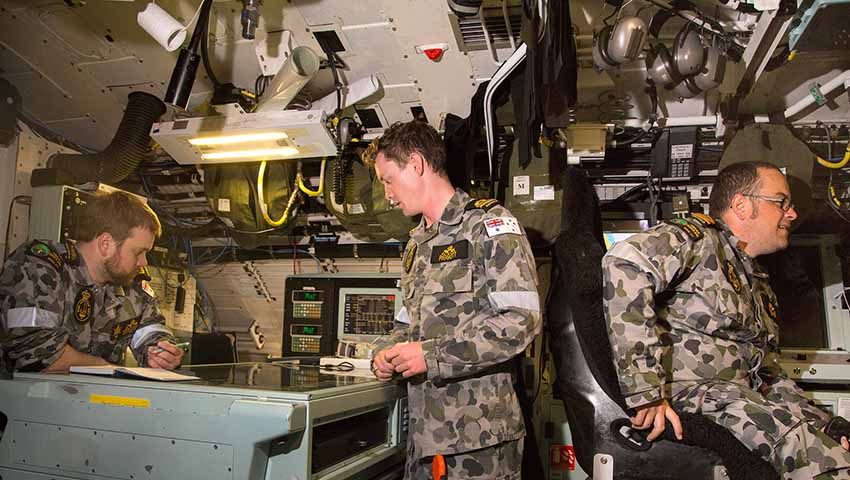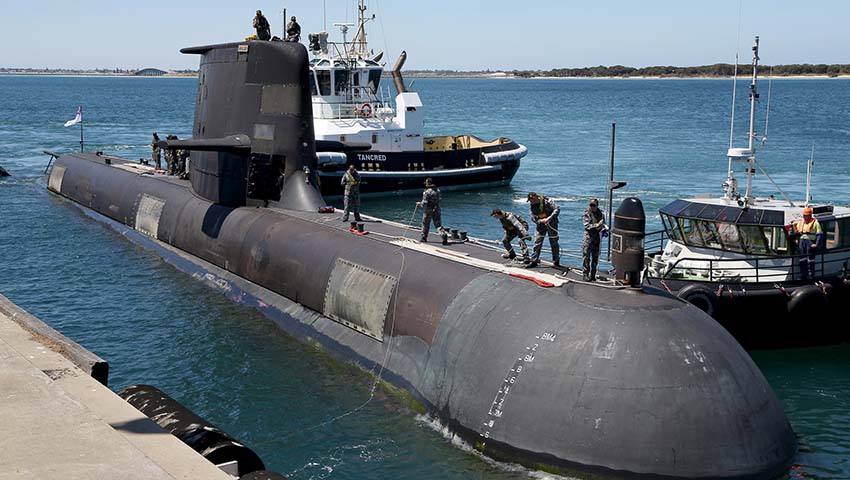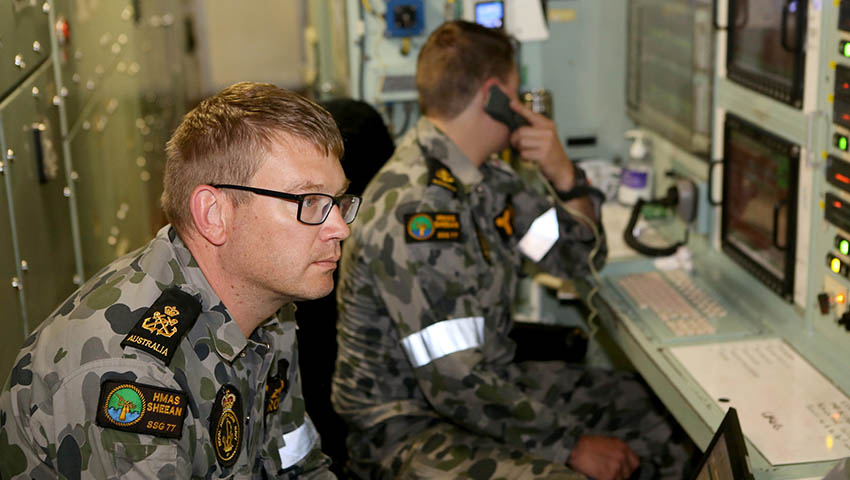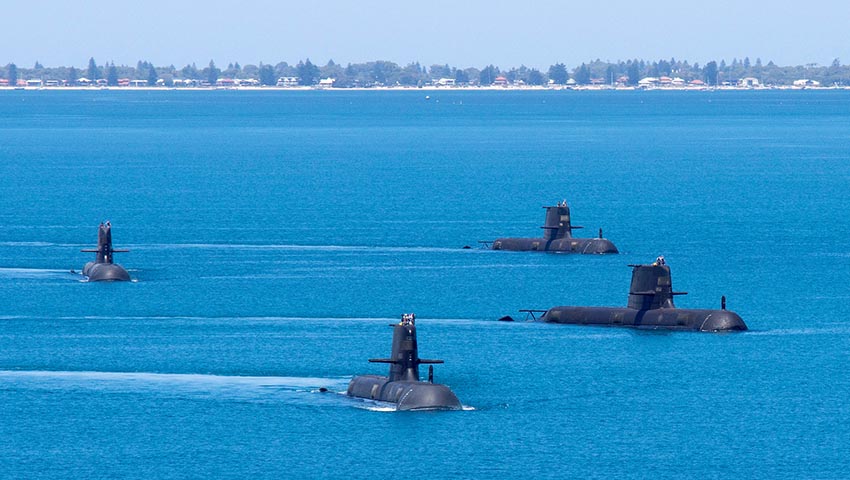image-1 = images/F35JointStrikeFighter/IMG_8750-1.jpg
title-1 =
description-1 = The proposal was accepted by the defence operational requirements committee in August 1978, and the project was given the procurement designation of SEA 1114.
The proposal for a new type of submarine to replace the Oberon Class of diesel-electric submarines began in July 1978, when the RAN director of submarine policy prepared a paper detailing the need to start considering a replacement for the ageing submarines. (Source Dept of Defence)
status-1 = 1
image-2 = images/F35JointStrikeFighter/IMG_8854-1.jpg
title-2 =
description-2 = Approval for the development phase of the project was given in the 1981-82 federal budget.
The RAN had four main requirements: that the submarines were tailored to operating conditions in the Australasian region, that they be equipped with a combat system advanced enough to promote a long service life, that appropriate and sustainable infrastructure be established in Australia to construct the boats, then provide maintenance and technical support for their operational lifespan, and that the submarines were capable of peacetime and emergency operations in addition to their hunter-killer role.
(Source Dept of Defence)
status-2 = 1
image-3 = images/CollinsClass/Collins-class-15-dc.jpg
title-3 =
description-3 = Ten submarines were envisioned, a number which was revised to between four and eight boats by the start of 1983, and later settled on the acquisition of six submarines, with the option to order two more.
SEA 1114 received design tenders from French DCNS, German Howaldtswerke-Deutsche Werft and Thyssen Nordseewerke, Italian Cantieri Navali Riuniti, Dutch Rotterdamsche Droogdok Maatschappij, UK Vickers Shipbuilding & Engineering, and the successful Swedish shipbuilder Kockums.
(Source Dept of Defence)
status-3 = 1
image-4 = images/CollinsClass/Collins-class-16-dc.jpg
title-4 =
description-4 = The companies were granted funding for project definition studies, from which the final selections would be made.
The Dibb report on the state of the Australian Defence Force was released in March 1986; it included advice that if the submarine project cost increased too much, the boats' capabilities should be scaled back to save money.
Then-defence minister Kim Beazley advised the project heads that he would not be able to secure cabinet approval for construction of the submarines if the predicted cost "started with a 4 [$4 billion]"
(Source Dept of Defence)
status-4 = 1
image-5 = images/CollinsClass/Collins-class-5-dc.jpg
title-5 =
description-5 = Each submarine was constructed in six sections, each consisting of several sub-sections.
One of the main criteria of the project was that Australian industries contribute to at least 60 per cent of the work; by the conclusion of the project 70 per cent of the construction and 45 per cent of the software preparation had been completed by Australian-owned companies.
The project prompted major increases in quality control standards across Australian industries: in 1980, only 35 Australian companies possessed the appropriate quality control certifications for Defence projects, but by 1998 this had increased to over 1,500.
(Source Dept of Defence)
status-5 = 1
image-6 = images/Collins-Class-submarine-at-ASC.jpg
title-6 =
description-6 = The first submarine, HMAS Collins, was laid down in February 1990. Collins' launch was originally planned for 1994, but was later set for 28 August 1993.
Although launched on schedule, she was not complete: the design of the submarine had not been finalised, important internal pipes and fittings were not installed, the components of the combat system had yet to be delivered, and some hull sections were actually sheets of timber painted black so the submarine would appear complete in photographs of the launching ceremony.
(Source Dept of Defence)
status-6 = 1
image-7 = images/RAN-Submarines.jpg
title-7 =
description-7 = The Report to the Minister for Defence on the Collins Class Submarine and related matters (commonly referred to as the McIntosh-Prescott report) concluded that the Collins Class was incapable of performing at the required level for military operations.
Despite this, the other five submarines were scheduled for completion at 12-month intervals.
However, the series of defects and problems encountered during sea trials of the submarines (particularly Collins) resulted in the repeated diversion of resources from those still under construction, adding to delays.
(Source Dept of Defence)
status-7 = 1
image-8 = images/CollinsClass/Collins-class-2-dc.jpg
title-8 =
description-8 = Consequently, delivery of the submarines ran significantly behind schedule; submarines were presented to the RAN between 21 and 41 months late, and the entire class was not cleared for full operational service until March 2004, a year after the last boat was commissioned.
These delays forced the RAN to keep several Oberon Class submarines and the submarine base HMAS Platypus in service beyond their planned decommissioning dates.
(Source Dept of Defence)
status-8 = 1
image-9 = images/CollinsClass/Collins-class-14-dc.jpg
title-9 =
description-9 = The McIntosh-Prescott report also sought to establish a $1 billion program to bring the fourth and fifth submarines (Dechaineux and Sheean) up to operational standards, then retrofit the modifications to the other boats.
(Source Dept of Defence)
status-9 = 1
image-10 = images/CollinsClass/Collins-class-13-dc.jpg
title-10 =
description-10 = Based at HMAS Stirling, Western Australia - the Submarine Training and Systems Centre (STSC) houses several combat, platform and propulsion system simulators, auxiliary plant training rigs, and a fully functional diesel engine. These learning systems maximise training ashore to develop the competence and confidence of the trainee before they proceed to sea.
Innovative solutions in the learning environment include a desktop virtual submarine walk through and virtual reality console operator training modules; state-of-the-art technology all developed in-house at STSC.
(Source Dept of Defence)
status-10 = 1
image-11 = images/CollinsClass/Collins-class-6-dc.jpg
title-11 =
description-11 = STSC employed 36 staff when it first opened with 45 students. It now employs 45 uniformed staff and APS, as well as approximately 40 civilian contractors to manage, develop and deliver initial, category and career development training for submariners. The current student body numbers approximately 150.
(Source Dept of Defence)
status-11 = 1
image-12 = images/CollinsClass/Collins-class-9-dc.jpg
title-12 =
description-12 = Powered by the AN/BYG-1 combat system - providing an open-architecture submarine combat control system for analysing and tracking submarine and surface-ship contacts, providing situational awareness as well as the capability to target and employ torpedoes and missiles.
The Collins Class submarines are armed with six 21-inch (530 mm) torpedo tubes, and carry a standard payload of 22 torpedoes. Originally, the payload was a mixture of Gould Mark 48 Mod 4 torpedoes and UGM-84C Sub-Harpoon anti-ship missiles; previously carried by the Oberon Class boats.
(Source Dept of Defence)
status-12 = 1
image-13 = images/CollinsClass/Collins-class-10-dc.jpg
title-13 =
description-13 = At 77.8 metres (255 ft) in length, with a beam of 7.8 metres (26 ft) and a waterline depth of 7 metres (23 ft), the six boats were the largest conventionally powered submarines in the world at the time of their commissioning.
The submarines are single-hulled, and have two continuous decks. Each boat displaces 3,100 tonnes (3,051 long tons) when surfaced, and 3,407 tonnes (3,353 long tons) when submerged.
(Source Dept of Defence)
status-13 = 1
image-14 = images/CollinsClass/Collins-class-8-dc.jpg
title-14 =
description-14 = The depth that the submarines can dive to is classified: most sources claim that the diving depth is in excess of 180 metres (590 ft) although some give the maximum depth as over 300 metres (980 ft).
(Source Dept of Defence)
status-14 = 1
image-15 = images/CollinsClass/Collins-class-1-dc.jpg
title-15 =
description-15 = The hull is constructed from a high-tensile micro-alloy steel, developed by Swedish steel manufacturer SSAB, and improved by BHP of Australia, which was lighter and easier to weld than the HY-80 or HY-100 nickel-alloy steel used in contemporary submarine construction projects, while providing better results in explosion bulge testing. (Source Dept of Defence)
status-15 = 1
image-16 = images/CollinsClass/Collins-class-11-dc.jpg
title-16 =
description-16 = The submarines are covered in a skin of anechoic tiles to minimise detection by sonar: Collins was retrofitted with the tiles after the standard sonar signature of the submarine had been established, while the other five boats were covered during construction.
These tiles were developed by the Australian DSTO: as the US and UK would not share their information on the tiles used on their nuclear submarines, Australian researchers had to develop the tiles from scratch. The tiles were moulded in the shape of the hull, and are secured by a commercial adhesive normally used to fix cat's eyes to road surfaces: although British and American submarines are often seen with missing tiles, as of March 2007, none have been lost from a Collins Class boat. (Source Dept of Defence)
status-16 =
image-17 =
title-17 =
description-17 =
status-17 =
image-18 =
title-18 =
description-18 =
status-18 =
image-19 =
title-19 =
description-19 =
status-19 =
image-20 =
title-20 =
description-20 =
status-20 =
Photo Essay: Australia’s silent assassins
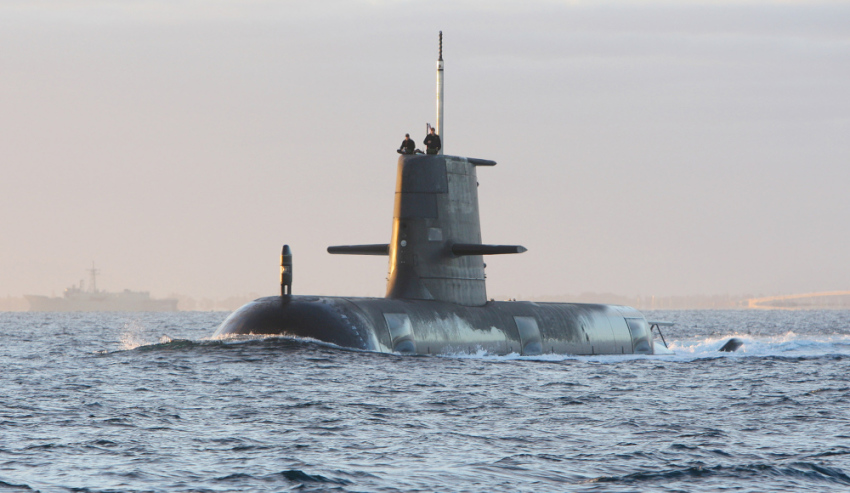
Click to launch gallery
Scroll to read and see more
Australia’s Collins Class submarines form a critical component of the nation’s deterrence capabilities – while the fleet has faced issues throughout acquisition and availability, the Collins Class provides the Royal Australian Navy with a lethal submarine capability.
Australia’s Collins Class submarines form a critical component of the nation’s deterrence capabilities – while the fleet has faced issues throughout acquisition and availability, the Collins Class provides the Royal Australian Navy with a lethal submarine capability.
You’re out of free articles for this month
To continue reading the rest of this article, please log in.
Create free account to get unlimited news articles and more!
Navies throughout Indo-Pacific Asia have increasingly recognised the advantages provided by submarines, leading to growing numbers of submarines operating in Australia’s direct proximity. Meanwhile, Australia has a long history operating submarines, ranging from the AE1 and AE2 to the highly capable Oberon Class and now, the somewhat maligned Collins Class.
Despite their reputation, the Collins Class vessels provide Australia with a leading-edge deterrence capability tailored specifically for its defence and two-ocean surveillance role in the Royal Australian Navy. Designed to be as quiet as advanced technology can achieve, Collins Class submarines have been developed from five generations of submarines designed and built by the Swedish Navy.
One of the first submarines to be totally designed by computers, these submarines boast a vast range of features. They include a high performance hull form, highly automated controls, low indiscretion rates, high shock resistance and an efficient weapons handling and discharge system.
The Collins Class submarines will move silently on electric power supplied by banks of new-technology batteries. The batteries are charged by three on-board diesel generator sets. The sophisticated AN/BYG-1 combat system gathers intelligence from its sensors, computes the input and then launches and directs weapons, and is an advance on any system currently available.
1
Australia's fleet of Collins Class vessels are slated to be replaced by the Attack Class beginning in the 2030s – the Attack Class is expected to deliver a quantum leap in the capability delivered to RAN and its submarine service by leveraging technology and capabilities developed for nuclear submarines, implemented on a conventional submarine.
The 12 vessels will be built by Naval Group at a specialist submarine shipyard at Osborne, South Australia. The Commonwealth government’s Australian Naval Infrastructure (ANI) program will support the development of the future submarine shipyards.
The Commonwealth formally signed the strategic partnering agreement (SPA) with Naval Group in February 2019 ahead of confirmation of the final design specifications and requirements for the Attack Class submarines.
The Attack Class will enter service with the Royal Australian Navy at a time when 50 per cent of the world’s submarines will be operating in the Indo-Pacific region.

 Login
Login




